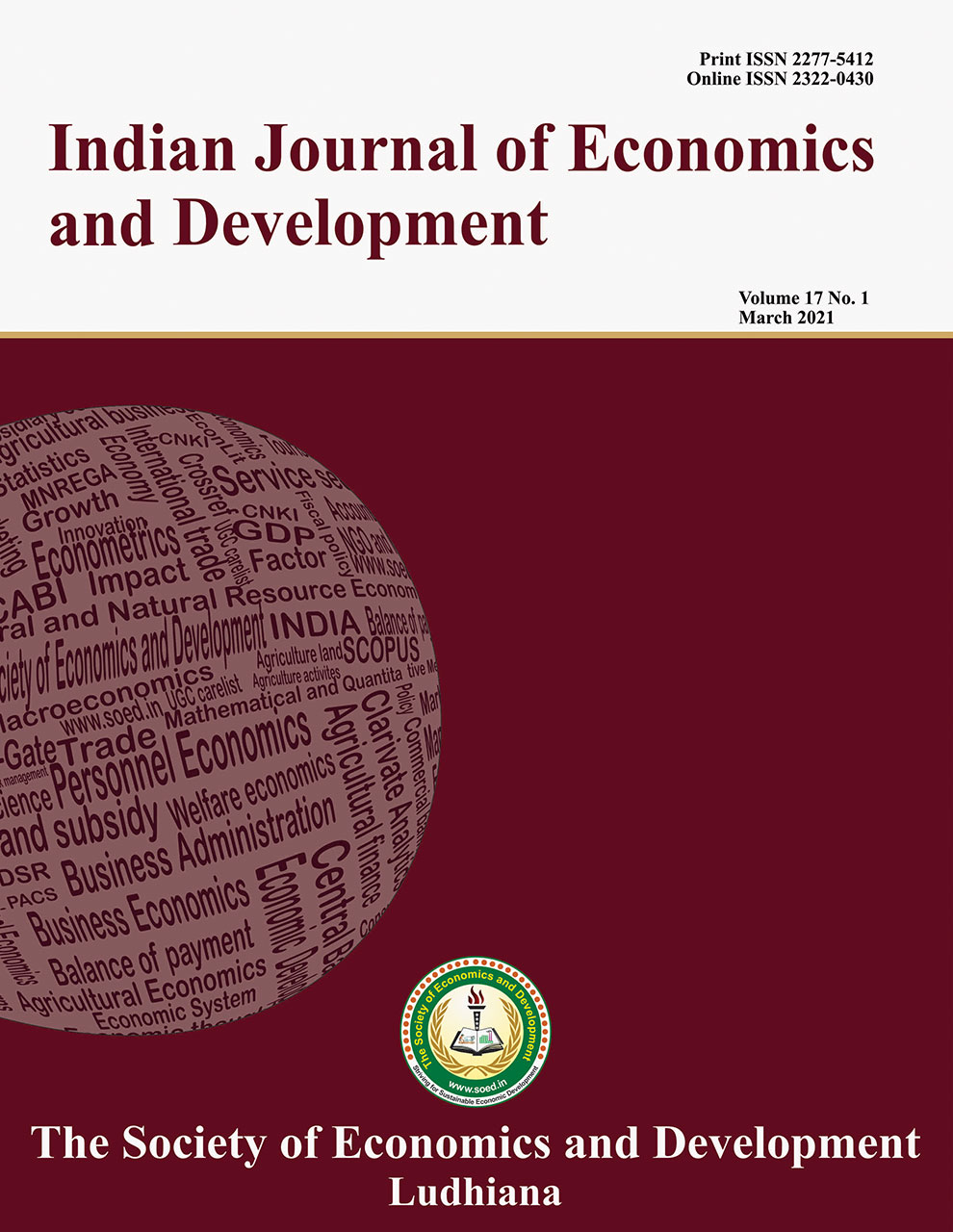Dynamics of Land Degradation in Uttar Pradesh: Zone-wise Analysis

Price: ₹ 1000
Author: Srishti Kushwaha1, D.K. Sinha2, and Nasim Ahmad3
Author Address: 1Ph.D. Scholar, 2Professor, and 3Senior Technical Officer, Department of Agricultural Economics, Dr. Rajendra Prasad Central Agricultural University, Pusa-848125, District Samastipur (Bihar)
Keywords: Cultivable, degraded land, food security, population pressure, saline soil.
JEL Codes: O13, O14, Q01, Q24, Q56.
Abstract
The study was undertaken to assess the extent of land degradation in the state of Uttar Pradesh. The data for the various forms of wasteland were collected from Wasteland Atlas of India for the period from 2000-01 to 2015-16. The study revealed that the proportion of total wasteland areas to total geographical areas was declined from 9.42 to 3.54 percent during the period under investigation. The percentage change was estimated to be -62.42 percent. The percentage decline was registered in all the categories of degraded lands like Gullied/Ravine soil (-62.07 percent), upland with or without Scrub (-60.09 percent), waterlogged and marsh soil (-84.80 percent), saline/alkaline soil (-63.49 percent), underutilized/degraded notified (-2.15 percent), degraded pastures/grazing land (-100.00 percent), degraded land under plantation (-100.00 percent), and inland/coastal (-95.00 percent), barren rocky/stony waste/sheetrock area (-71.88 percent) except mining or industrial land. Mining and industrial land were increased by 200.00 percent during the period from 2000-01 to 2015-16. Mining/industrial land increased because of urbanization and the installation of industries in the state. The decline in other categories of land was registered on account of the Land Reclamations Scheme launched by the U.P. Government to improve the quality of the land. With the increasing demand for land due to population pressure and ensure food security, it is the need of the hour to make more and more wastelands or degraded lands usable and cultivable.
Description
Indian Journal of Economics and Development
Volume 16 No. 2, 2020, 221-228
DOI: https://doi.org/10.35716/IJED/20087
Indexed in Clarivate Analytics (ESCI) of WoS
Srishti Kushwaha1, D.K. Sinha2, and Nasim Ahmad3
1Ph.D. Scholar, 2Professor, and 3Senior Technical Officer, Department of Agricultural Economics, Dr. Rajendra Prasad Central Agricultural University, Pusa-848125, District Samastipur (Bihar)
Corresponding author’s email: srishtikushwaha6@gmail.com



